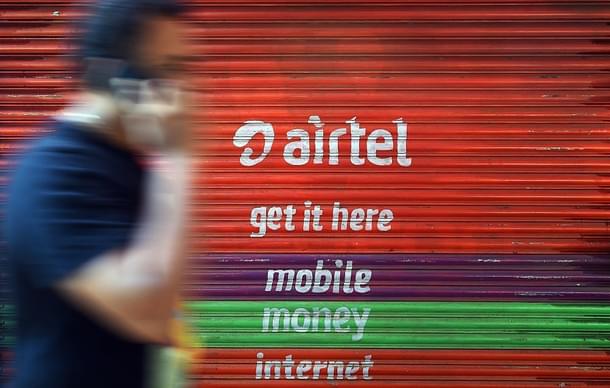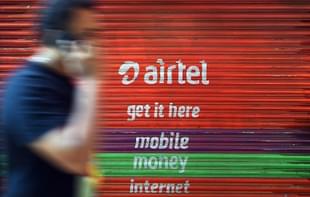News Brief
Explained: The Long History Of Adjusted Gross Revenue (AGR) Dispute Between DoT And Telecom Companies
Swarajya Staff
Feb 15, 2020, 07:16 AM | Updated 07:16 AM IST
Save & read from anywhere!
Bookmark stories for easy access on any device or the Swarajya app.


The Supreme Court on Friday (Feb 14) launched a scathing attack on the Department of Telecommunications (DoT) for not taking any action or collecting a single rupee from telecom operators such as Bharti Airtel and Vodafone Idea India (VIL) on their adjusted gross revenue (AGR) dues.
A three-judge bench headed by Justice Arun Mishra expressed shock that the telcos – Vodafone Idea and Bharti Airtel – had not paid any of their dues by the 23 January deadline set by the court in its AGR judgement last October. Justice Mishra was livid, saying he was “literally shocked” that not a "single penny has been paid till date", and asked for the initiation of contempt proceedings against the telcos. Reliance Jio is the only telco to have paid up.
The court was equally furious with the Department of Telecom for allowing the telcos to delay payments until the court verdict.
The bench’s unrelenting stand on the payment of dues is likely to push Vodafone Idea, which will have to cough up Rs 53,000 crore quickly, towards collapse. Bharti Airtel, which has over Rs 35,000 crore in dues, can raise the money required. It is building a war-chest to pay off the dues, having raised $250 million in perpetual bonds recently after garnering $3 billion in January.
The Long History Of ADR Dispute
To provide releief to telecom operators from the steep fixed license fee regime, the NDA government in 1999 gave an option to the licensees to switch to the revenue sharing fee model. Under this regime, the mobile telephone operators were required to share a percentage of their AGR with the government as annual license fee (LF) and spectrum usage charges (SUC)
License agreements between the Department of Telecommunications (DoT) and the telecom companies help defining the gross revenues of the latter. AGR is then calculated after allowing for certain deductions spelt out in these license agreements. The LF and SUC were set at 8 per cent and between 3-5 per cent of AGR respectively, based on the agreement.
The dispute between DoT and the mobile operators has been mainly on the definition of AGR. The DoT argued that AGR includes all revenues (before discounts) from both telecom and non-telecom services.
The companies claimed that AGR should comprise just the revenue accrued from the core services and not dividend, interest income or profit on sale of any investment or fixed assets.
In 2005, Cellular Operators Association of India (COAI) challenged the government’s definition for AGR calculation. However the dispute over the definition of adjusted gross revenue (AGR) between the Department of Telecommunications and telecom operators took an eventful turn in 2007-08.
In 2007-8, Telecom Disputes Settlement and Appelate Tribunal (TDSAT) had narrowed the scope of AGR. Following this, the then UPA government went into an appeal.
The Department of Telecommunications (DoT) challenged in the Supreme Court the TDSAT's jurisdiction over the terms of the telecom licences that had earlier been accepted unconditionally by telcos.
In an order dated January 19, the apex court dismissed DoT's appeal and directed it to raise its contentions before the TDSAT.
At that time, A. Raja was the Union Telecom Minister, who was later involved in several controversies. The TDSAT again reiterated its earlier findings.
On August 30, TDSAT accepted most of TRAI's recommendations and passed an order that would be applicable to those AUSPI members that had moved the TDSAT with effect from the date when they filed their petitions.
Industry body AUSPI and the Cellular Operators Association of India (COAI) filed a review petition urging that the TDSAT order be made applicable to all members of the two bodies from the date of filing of their petition.
Following this, DoT again went into an appeal on the advice of the law ministry which was headed at that time by Kapil Sibal.
DoT again moved the Supreme Court against the August 30 TDSAT order. Even as the DoT appeal was pending before the apex court, some telcos filed petitions before TDSAT requesting to be included in the tribunal's August 30 order.
The Supreme Court on October 11, 2011, held that TDSAT's August 30, 2007, order should be set aside. It allowed licencees to challenge any demand before TDSAT, which would have to go into the merits of the claim and decide whether it was in accordance with the licence agreement and in consonance with the AGR definition. All telecom licencees moved the TDSAT challenging the basis of DoT's licence fee demand.
In 2015, the TDSAT stayed the case in favour of telecom companies and held that AGR includes all receipts except capital receipts and revenue from non-core sources such as rent, profit on the sale of fixed assets, dividend, interest and miscellaneous.
As a matter of reference, the case would be akin to say that of an aluminium plant. The excise could have claimed that the cost of a fan and lake ought to be part of the assessable value. The cost of land, workers, etc. all be part of the final cost of each kg of aluminium.
However, setting aside TDSAT’s order, Supreme Court on October 24, 2019 upheld the definition of AGR as stipulated by the DoT.
(With inputs from IANS)





